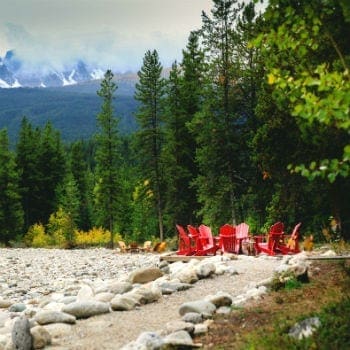
Staffing is one of the key issues nowadays for any hotel property, but turnover is especially painful for resorts located in isolated locations far removed from urban centers where labor pools are concentrated. With the daily commute becoming quite burdensome the further the property is away from a city, oftentimes the only worthy incentive is to offer onsite room and board as part of the employment package.
This approach can have several drawbacks, not to mention the extra expenses involved in subsidizing all these additional personnel living on property. In speaking with Bill Rheaume, Director of Management Services at Inntegrated Hospitality Management (IHM), he offered two resorts that together offer a holistic view of the advantages and disadvantages of the different approaches to the staffing challenge that most rural properties are facing.
As background, IHM is a Canadian hospitality consulting and management company offering a full range of integrated management services for hotel, resort, and food & beverage operations, specializing in operations efficiency, market repositioning and cash flow maximization with numerous client properties found throughout the country. The two hotels that Bill has highlighted for this case study are Baker Creek Mountain Resort situated just outside Lake Louise, Alberta within the iconic Rocky Mountains, and Halcyon Hot Springs Resort nestled away in the interior of British Columbia and over two hours drive from the nearest major population center.
Approximately 50km from the renowned ski village of Banff and over two hours’ drive from Calgary, Baker Creek is a 35-room resort that is mandated by the government to supply some form of employee housing because of its location within a national park. Given this directive, all team members live onsite save for one commuting senior manager. Staff have the option of four separate, multi-purpose buildings with four additional apartment units devoted solely to the management level. Most line employees typically share a room while supervisors are assigned their own rooms.
The leading advantage of this setup is that all team members are always close by, thus affording them an unsurpassed ease of going to and from work. With the rent subsidized, staff also have the ability to prepare their own meals instead of depending on a cafeteria or takeout. Lastly, the Rockies beckon, giving all employees immediate access to a plethora of hiking trails, winter sports and some of the most spectacular scenery in the world.

While these pros are crystal clear, some of the drawbacks can become quite demoralizing over the long run. First and foremost is cabin fever. The remote location means that employees have limited external social interactions, and even less ‘breathing room’ away from their fellow teammates. This can be particularly burdensome for line staff who do not necessarily get to choose their roommates with the potential for personal conflicts to ensue. As well, just because their accommodations are bankrolled by the hotel does not mean that they can afford a car, and they are often at the mercy of friends or the resort’s shuttle to use the national park’s array of amenities and services. All work and no play makes Jack a dull boy, am I right?
Located in an even more remote locale in British Columbia’s West Kootenay region, resort ownership decided to take a slightly different approach for the 45-room Halcyon property. A variety of employee housing exists onsite including some rooms above the restaurant in the main lodge as well as a series of RVs and rooms in a modular building located in a designated area of the grounds. These on-property accommodations account for 40% of staff while the remainder live in Nakusp – the nearest town, approximately 30 minutes’ drive away. Recently, the resort owners made the decision to expand employee housing in Nakusp rather than increasing on-site accommodation, acquiring a residence and land for a new building, and they happily provide a daily shuttle service for all staff living there.
Like that for Baker Creek, the onsite employee housing has all the same benefits and shortcomings. However, those living in offsite housing are able to experience a greater social dynamic in that they are embedded in a community for more frequent interactions with friends or family and they have a small buffer away from their place of work. The two downsides to this residence in Nakusp are both related to cost in terms of subsidizing the higher rental prices and the hour-round trip shuttle service.
While Baker Creek and Halcyon demonstrate two slightly different approaches, there are quite a few other variants for you to consider, but it all depends on your resort’s unique situation. To make a decision one way or the other, Bill emphasized the following key questions:
- Does the labor environment or talent availability necessitate the creation of employee housing?
- What legal requirements for housing are mandated in your territory?
- What type of employee are you trying to attract? Are you looking for an attribute that may limit your options like mature staff, managers, experienced tradespersons, couples or families?
- Is the resort within the boundaries of a town or village? Moreover, is the resort within walking distance of essential services or amenities?
- Does the property have enough space or land to accommodate employee housing away or out of immediate eyeline of guests?
- What is the cost of building or repurposing an existing building onsite versus the construction or acquisition of offsite housing? For the latter, have you considered future real estate value?
- What are your ancillary costs associated with any form of employee housing including maintenance, transportation and taxation?
While there’s certainly a lot to consider here, what Bill’s analysis has shown is that you must give some more thought to how certain types of housing will influence the long-term morale of your team members as well as how this will affect service delivery or staff retention rates. If you’re able to carefully answer the above questions, though, you will undoubtedly reach the best possible solution to your housing problems.
















